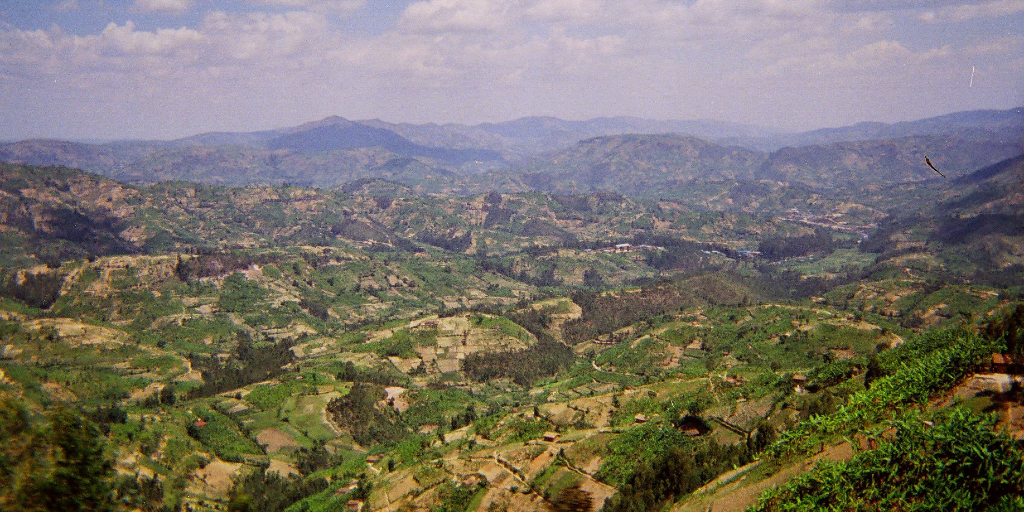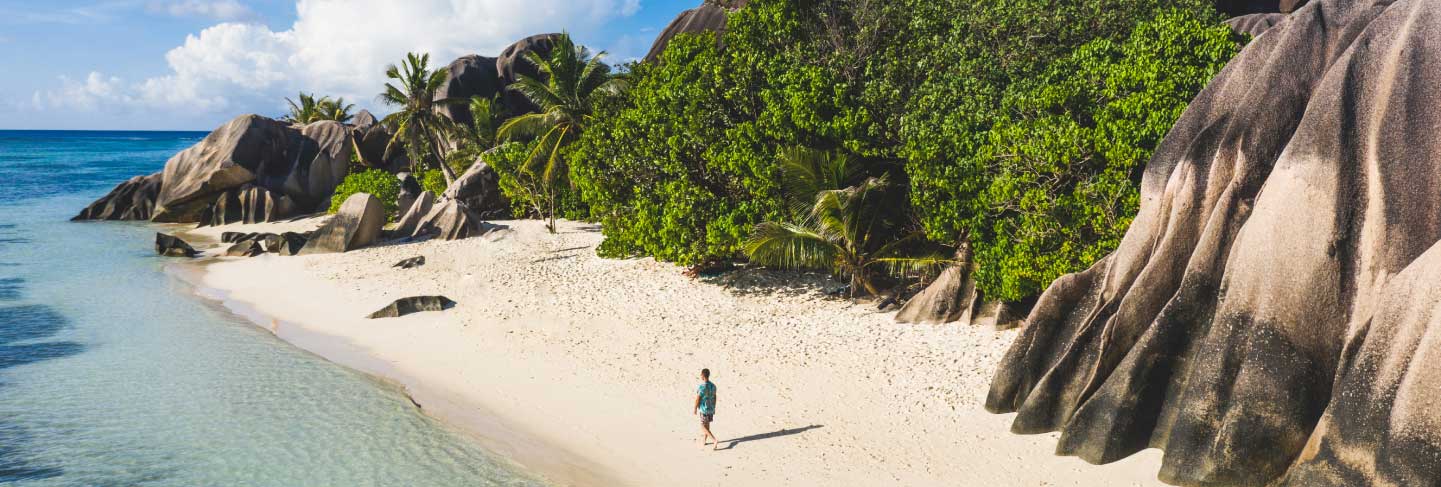What are the best ecotourism destinations?
Tasneem Johnson-Dollie
Posted: May 5, 2021
The images in this article were taken pre-COVID-19.
If you’re looking for top-notch sustainable tourism opportunities, what are the best ecotourism destinations you can travel to?
For green-minded individuals, ecotourism means you can travel while contributing to a cause that matters to you.
From sun-kissed islands to secluded forest settings, sustainable tourism destinations offer adventure, panoramic landscape views and the chance to sink into everyday activities that set your “I’m making an impact” metre soaring.
But, what’s ecotourism anyway?
Here’s a peek into what being an ecotourist is all about as well as some of the top ecotourism destinations you could travel to as a sustainable tourist.
What is ecotourism and why is it important?
Ecotourism is defined as, “responsible travel to natural areas that conserves the environment, sustains the well-being of the local people, and involves interpretation and education” by the International Ecotourism Society (TIES).
In simpler terms, an ecotourist travels in a way that doesn’t have a negative impact on the people, plants, animals and environments in the areas they visit.
Ecotourism is an important part of meeting global sustainable development goals.
The United Nations defines sustainability as, “meeting the needs of the present without compromising the ability of future generations to meet their own needs.” Any type of tourism that feeds into achieving sustainability can be considered sustainable tourism.
So, ecotourism is one type of sustainable tourism. Ecological tourism, soft tourism and rural tourism are all different kinds of sustainable tourism too, but ecotourism is the most well-known and popular form of sustainable travel.
Why is sustainable tourism important?
According to research done by the Overseas Development Institute (ODI), tourism is beneficial for economic development and gender equity, but it can also have a negative impact on environmental well-being.
The United Nations Environment Program (UNEP) highlights the three main ways in which tourism affects natural environments, they include:
- the depletion of natural resources
- pollution
- physical impacts.
The effects of tourism on natural environments across the world has been significant. In fact, a 2014 report by the ODI highlighted some interesting facts about unsustainable tourism trends and their contribution to global challenges. Here are just some of those findings:
- In general, tourists were seen to use twice as much water while on holiday when compared to what they’d use at home.
- In some popular Asian travel destinations, potable water was diverted from local communities to serve tourist resorts.
- Tourism has a particularly significant negative effect on biodiversity in coastal regions, rainforests, arid and semi-arid areas, and mountainous landscapes.
- One example of this is that tourists trekking through Nepalese forests – an ecosystem affected by deforestation – have been seen to use up to five kilograms of wood each per day.
Unsustainable tourism is known to contribute around 8% of global carbon emissions. And the biggest players are transportation and accommodation.
So, the growing trend in global tourism has become a concern. While only 25 million people went on overseas trips in 1950, by 2019 this number had grown to 1,5 billion. This means that tourism is set to play an even bigger role in carbon emissions in the future – if we don’t make some meaningful changes.
If every tourist switches to sustainable tourism – or ecotourism – tourism’s contribution to climate change could drop down to almost 0%. And this would make a meaningful impact in overall global carbon emissions and addressing climate change.
Here are some of the best places you could travel to as an ecotourist to reap the best ecotourism benefits.
Top five ecotourism destinations
There are so many different sustainable tourism destinations worldwide. From village-stay vacations to environmentally friendly five-star hotels.
We’ve made a list of the top sustainable tourism destinations that offer the best ecotourism benefits.
1) Rwanda
Original image: rwanda by Jon Evans is licensed under CC BY-SA 2.0
One of the best things about sustainable tourism is how it can tune travellers into the natural environment they’re in.
In Rwanda’s Volcanoes National Park, mountain gorillas are the stars of the sustainable travel scene, and with good reason.
Mountain gorillas are some of the most endangered animals on Earth. Conservation efforts that draw travellers into their habitats and teach ecotourists about gorillas’ lifestyles add to global awareness about their conservation status. And, this is key in safeguarding them.
Of course, the travel activities centred around these creatures’ habitats wouldn’t be as beneficial if they weren’t sustainable.
This is why Rwanda’s focused on offering travellers mountain getaways that build on the country’s sustainable tourism industry.
You could spend time learning about local people and traditions at a cultural village. Or, you may set off to search the forested scenery for silverback gorillas under the watchful eye of a local guide – who may previously have been employed by the poaching industry.
Lodges in gorilla reserves also limit the number of tourists allowed in and offer eco-friendly accommodation and transport.
2) Bhutan
Original image: Paro, Bhutan by Richard Mortel is licensed under CC BY-SA 2.0
Bhutan is an Asian country that has remained fairly isolated from the rest of the world. This has benefited this top ecotourism destination in a number of ways.
Firstly, Bhutan has practised decades of cultural preservation that isn’t always possible in countries that have opened up to global influences.
One example of this is that living in harmony with nature is of cultural importance to Bhutanese locals, and local authorities have prioritised nature conservation over urban development and agricultural expansion.
Sustainable travellers visiting Bhutan pay a daily tariff that covers accommodation, transport, meals and guided tours. Around 30% of this tariff also goes towards the conservation of the natural environment.
Add to this the fact that Bhutan is the only carbon-negative country in the world – meaning that the country has a net absorption instead of production of carbon emissions – and you can see how visiting this country can add to your understanding of sustainable tourism in a big way.
Further reading: Why Bhutan is the only carbon-negative country in the world
3) Kenya
Original image: kenya by ryan harvey is licensed under CC BY-SA 2.0
Home to one of the world’s biggest natural attractions – East Africa’s Great Migration – Kenya is a key spot for seeing how mother nature makes things happen first-hand.
The Great Migration sees antelope, wildebeests and zebras travelling thousands of kilometres from Tanzania to Kenya’s Masai Mara National Reserve. The reserve is also home to tons of other African animals like giraffes, lions, leopards and cheetahs.
But, besides its role as an important African habitat, Masai Mara is also an ecotourism region where you can see how collaboration led to some of the best sustainable travel opportunities.
By working together, local community leaders and private tour operators were able to develop sustainable systems that benefit nature, local people, tourists and business owners.
Some examples of this are that around 95% of the staff employed at local game lodges – which add to wildlife conservation efforts – are from the local Masaai community, part of every tourist’s accommodation fee goes towards safeguarding a section of the wild habitat, and local people receive some of the funds made by private tour operators.
As a volunteer in Africa, you could experience ecotourism benefits at their best in Tanzania, South Africa, Ghana, Seychelles, Zambia or Zanzibar and get a true feel for what sustainable tourism is all about in Africa.
4) Costa Rica
With around one-quarter of the country classified as protected jungle, Costa Rica is a conservation hub. And the ecotourism perks don’t end there.
Most of the accommodation in Costa Rica places emphasis on a healthy lifestyle: serving organic food, developing and maintaining green spaces, and putting processes in place to make conserving and recycling natural resources easy to do on an everyday basis.
And as a GVI volunteer, you’ll get the chance to experience ecotourism accommodation in the heart of Tortuguero or Manuel Antonio National Park while adding to sustainable development goals.
5) Palau
Original image: palau by jeff~ is licensed under CC BY-SA 2.0
Palau is an archipelago in the Micronesian region of the Pacific Ocean. Together, its 500 islands have become a leading sustainable tourism destination because of local people’s focus on prioritising marine conservation over tourism.
Almost 80% of the country’s waters have been set up as a marine life sanctuary, and Palau authorities are known to take swift action if tourist activity seems to be affecting an ecosystem.
For example, Jellyfish Lake was one of the most visited locations in Palau because of the thousands of stingless jellyfish that could be seen wobbling around this rock-encircled body of water.
After authorities noticed a decline in the jellyfish population, the lake was closed off to the public for many years. The spot was taken over by researchers looking to figure out what factors had affected the ecosystem and caused this drop in jellyfish numbers.
This intervention added to the conservation of these creatures and the population has since stabilised.
Palau is also an ecotourism destination where you can see the commitment to sustainable tourism first-hand.
The beaches are kept clear of litter, the ocean waters are monitored for debris and the government limits the number of travellers who visit the islands.
This makes for an ecotourism destination where being a responsible tourist is built into living your island-style dreams.
If you’re looking to get involved in sustainable tourism in the Pacific Ocean, you can volunteer in Fiji and add to achieving global development goals that will build on Fiji becoming one of the world’s best sustainable tourism destinations.
These ecotourism destinations are tops at allowing tourists to travel and add to the well-being of plants, animals and people at the same time.
Take a look at GVI’s volunteer abroad programs, and see how you can navigate your way to some of the world’s best ecotourism destinations and make a meaningful impact too.
By Tasneem Johnson-Dollie











